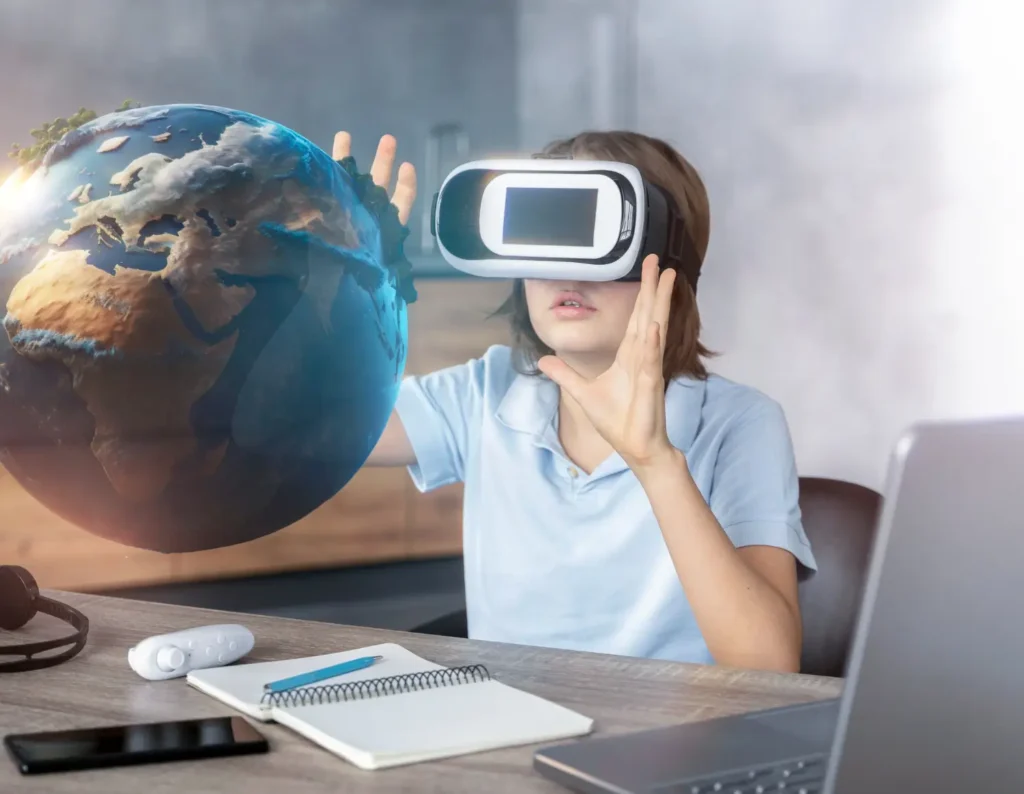When you think of popular technologies, you probably think of things like smartphones and the internet. But what about virtual reality (VR)? It’s quickly growing in popularity, with businesses and consumers alike seeing its potential for entertainment, education, and more.
So, is VR really as big as we think it is? And what does this mean for the future of technology? In this BBC News article, you can read about some of the potential implications of VR’s rise. From giving us a better understanding of disease to changing how we design products, VR has a lot to offer. So if you’re looking to stay ahead of the curve in technology, keep an eye on VR—and maybe even start using it yourself!
Virtual Reality Becomes More Popular Than Ever
Virtual reality is becoming more popular than ever, with new headsets and software becoming available all the time. This technology allows people to experience different worlds, often in a way that is much more realistic than traditional video games or movies.
Many people are already using virtual reality for entertainment purposes, but there are also a number of other potential uses for this technology that have yet to be explored. For example, it could be used to train doctors on how to treat patients in a realistic environment. Or it could be used to create simulations that help people learn about different parts of the world.
Virtual reality is still in its early stages, but there are sure to be a lot of exciting developments in this area over the next few years.
How Virtual Reality Is Used
Virtual reality is a type of immersive simulation or game that can be used to experience a different environment. Virtual reality technology has been growing in popularity in recent years, with some companies even expecting virtual reality to be more popular than traditional forms of media by 2021.
Some people use virtual reality as an escape from the real world. Others use it to train for certain jobs or to learn new information. Virtual reality also has medical applications, such as helping patients learn about surgery before they undergo it.
What Are the Advantages of Virtual Reality?
Virtual reality is a type of technology that immerses users in a simulated environment. It can be used for gaming, education, and therapy. Virtual reality has many advantages over other forms of technology. For example, it is immersive and allows users to experience things that are impossible or difficult to do in the real world. Virtual reality also has the potential to improve literacy and numeracy skills.
Disadvantages of Virtual Reality
Virtual reality is a growing trend in the world of technology. It has been around for many years but has recently become more popular. Some people see virtual reality as a way to escape reality, while others see it as a way to improve their experience. Virtual reality has some disadvantages, however.
One disadvantage of virtual reality is that it can be dangerous. When you are in virtual reality, you are completely surrounded by the environment. This could lead to injuries if you fall or if someone else accidentally bumps into you. Additionally, some virtual reality games can be quite violent and can cause injury if played without caution.
Another disadvantage of virtual reality is that it can be expensive. Some virtual reality headsets cost over $300, which can be out of the reach of many people. Additionally, many virtual reality games require a high-speed internet connection in order to work properly, which can also be expensive for some people.
Despite these disadvantages, virtual reality continues to grow in popularity because there are so many potential benefits associated with it. For example, virtual reality can help people with disabilities access new environments and experiences, which could immensely improve their lives. Additionally, virtual reality has been shown to improve mental health outcomes in some cases, which is something that is definitely worth considering.
Conclusion
Virtual reality is growing in popularity, and technology can’t keep up. The reality of virtual reality is so realistic that it has the potential to change our lives for the better. It could help us overcome challenges such as phobias and social anxiety or even be used in therapeutic settings like mental health clinics. As the technology continues to develop, we can only imagine what new and unimaginable applications will be created for virtual reality.


